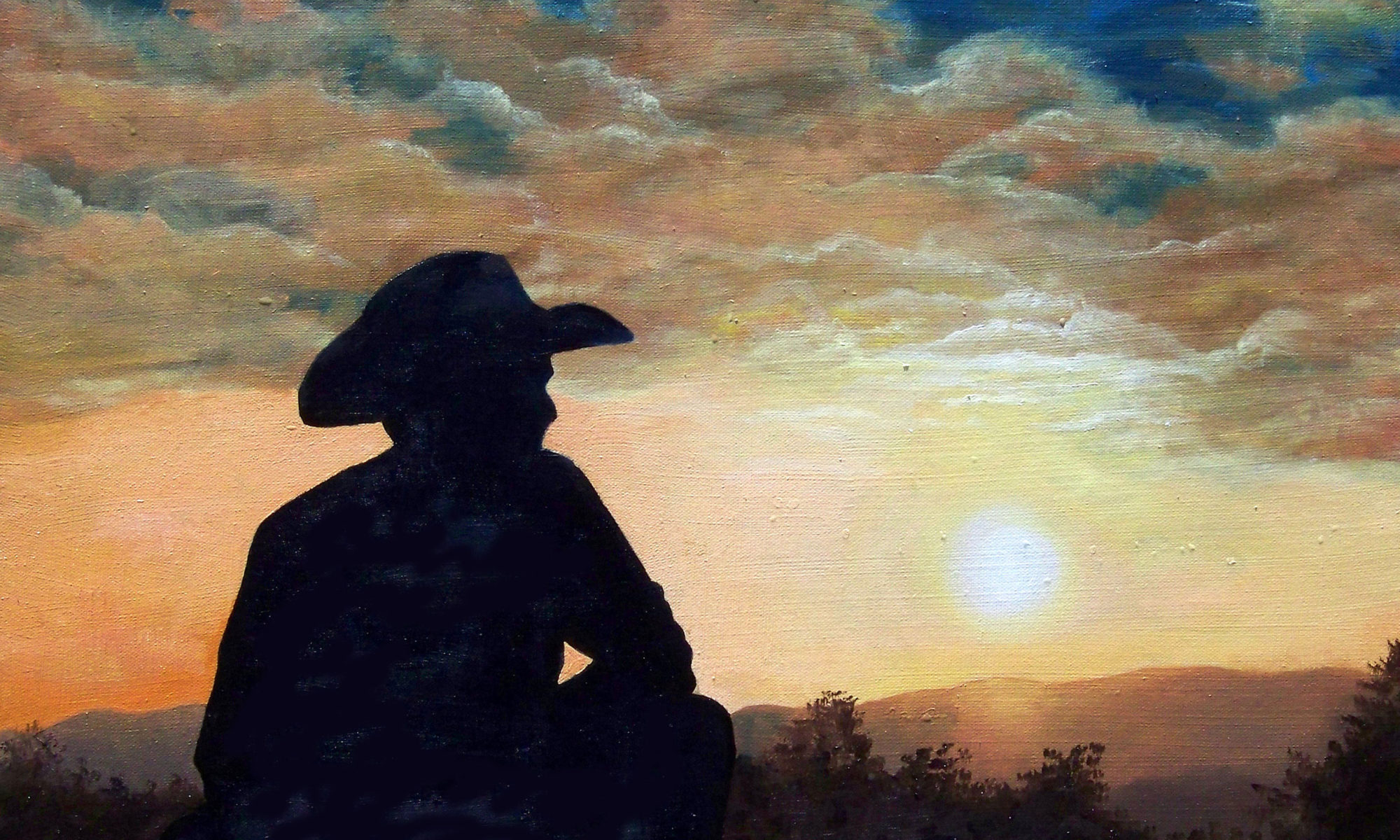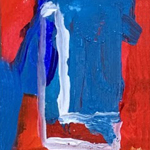
LACQUER | LYRICAL ABSTRACTION
Quick links to more art terms and definitions are located at the end of the list.
Lacquer
Refers to a clear or colored finish material that dries to a hard, glossy finish. Usually applied with a sprayer, lacquer dries too quickly for smooth application with a brush unless specially formulated.
Land Art (Earth Art)
(Also known as Earth Art, environmental art, and Earthworks.)
An art movement that emerged in the 1960s and 1970s in the United States and Great Britain as a response to the commercialization of art. It involved works made directly in the landscape, sculpting the land itself into earthworks or making structures in the landscape using natural materials found on-site, such as rocks, twigs, and soil. Land art sites were often far from metropolitan areas, emphasizing a connection to nature.
Landscape
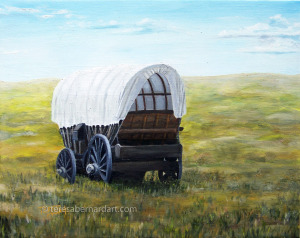
A painting, drawing, or photograph that depicts outdoor scenery, featuring mountains, valleys, meadows, trees, rivers, woodlands, the sky, and weather. They can even include farms and structures in the countryside. Fencing, bridges, barns, windmills, and farmhouses are examples of what one could expect to see in landscape art. For more on landscapes, click here.
Landscape Still Life
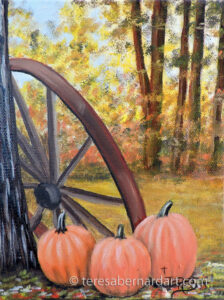
A type of still life painting that incorporates elements of both still life and landscape genres. This style typically features inanimate objects arranged in a natural or outdoor setting, blending the detailed focus of still life with the broader context of a landscape.
In a landscape still life, you might find objects like fruits, flowers, or man-made items placed within a natural environment, such as a garden, forest, or field. The background often includes elements of the landscape, such as trees, hills, or bodies of water, providing a harmonious blend of the two genres.
Leading
In typography (rhymes with heading), the space between lines of type, often measured from the baseline of one line to the baseline of the next and less frequently measured from ascender to ascender. The term “leading” originates from the era of hot metal typesetting, where strips of lead were inserted between lines of type to establish line spacing.
Leitmotif
A recurring theme or motif in music, literature, or visual arts. In visual art, it can be a repeated symbol, color, or compositional element that carries symbolic meaning throughout a series of works or within a single piece.
Les Nabis
A group of young French artists active in Paris from 1888 until 1900 who played a significant role in the transition from Impressionism and academic art to abstract art, symbolism, and other early movements of modernism. Key members included Pierre Bonnard, Maurice Denis, Paul Ranson, Édouard Vuillard, and others. The Nabis believed that art was not merely a depiction of nature, but a synthesis of metaphors and symbols created by the artist. Their legacy continues to resonate in the evolution of modern art.
Life Drawing (Figure Drawing)
A form of art that involves drawing the human figure from live models, aiming to encapsulate the essence, spirit, and emotions of the subject, rather than just the physical appearance. It’s a practice that allows artists to study anatomy, proportions, and movement, honing their skills by observing real-life models in a classroom setting or during sessions with hired models.
Light Table (Light Box)
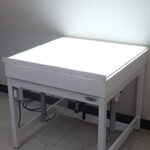
A table that has a translucent top with a light shining up through it, made especially for working with negatives, viewing transparencies and slides, and pasting up artwork. Light tables are a staple in the graphic design industry, especially for the creation of cartoons and comics. They are indispensable for tracing artwork, examining film negatives, and reviewing photolithographs, or any other work that requires a detailed inspection on a flat surface.
Lightfastness
Refers to a paint’s ability to resist fading under ultraviolet light, determining the pigment’s retention of its original color. To determine the lightfastness of your oil paints, check the label and look for the official American Society for Testing and Materials Standard (ASTM) rating.
Lightfastness ratings are:
-
- ASTM I—Excellent
- ASTM II—Very Good
- ASTM III—Not Sufficient
Likeness
Refers to the similarity in appearance, character, or nature between persons or things. In the context of fine art, it often specifically relates to portraits—those visual renderings that capture the essence of an individual. When an artist aims to create a likeness, they seek to convey recognizable features, expressions, and characteristics of the subject.
Limited Edition
A limit placed on the number of prints produced in a special edition to create a print scarcity. Limited edition prints are signed and numbered in sequence by the artist. Once the edition is sold out, the digital file is deleted by the Giclée Printmaker to ensure the edition’s uniqueness. The artwork will never be replicated in that format.
Limited Palette (in painting)
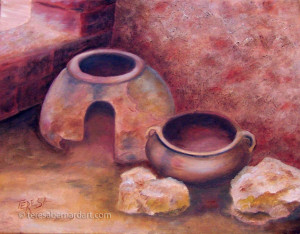
Refers to using a small selection of pigments, typically three to five, to create a wide range of colors. This technique, which involves restricting color choices, allows an artist to achieve a greater sense of harmony and unity within their work. Artists like John Singer Sargent, Anders Zorn, and Claude Monet utilized this method. The pigments selected depend on the desired effect: muted tones, intense contrasts, or maximum color variations with minimal tubes of paint.
Line
A long, narrow mark connecting two points. It has one dimension — length. When two ends of a line meet, a shape is created. Lines can also create textures and patterns when combined with other lines. There are different types of lines they include: horizontal, vertical, diagonal, curved, organic, contour, geometric, and implied. An implied line is the path that the viewer’s eye takes as it moves along a path from form, color, or shape within a work of art.
Line Drawing (Line Art)
A drawing style that uses a pencil, pen or brush to create distinct straight lines or curves of a shape or form on a simple background. Line art is often one color and is used to depict two- or three-dimensional objects with no hue or shade variations.
Linear Perspective
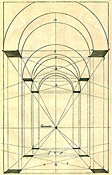
A graphical system used by artists for creating the illusion of depth on a two-dimensional surface. The system is based on a scientifically or mathematically derived series of actual or implied lines intersecting at a vanishing point on the horizon. As objects move away from the viewer, they appear to grow smaller and converge toward the vanishing point. The vanishing point may be in any direction the viewer looks, including up, and may also be visible (on the canvas) or imaginary (somewhere off the canvas). Linear perspective determines the relative size of objects from the foreground to the background.
Liner Brush
A fine, pointed brush with long bristles. It’s commonly used for delicate details, fine lines, and outlining in painting or calligraphy.
Linseed Oil
(Also known as flaxseed oil.)
A versatile and essential medium in the world of oil painting. Linseed oil is derived from the dried and ripened seeds of the flax plant (Linum usitatissimum). It has been a staple in artists’ toolkits for centuries due to its unique characteristics.
How Artists Use Linseed Oil:
-
- Mixing with Paint: Artists mix linseed oil directly with their oil paints to achieve specific effects. It’s similar to how water is used with acrylics—it thins the pigments, making them more transparent.
- Layering: Slower-drying paint (mixed with linseed oil) is typically applied over completely dry layers. Turpentine or mineral spirits, on the other hand, speed up drying and are best used in initial layers.
- Brush Cleaning: Linseed oil is also handy for cleaning brushes after painting sessions.
Lithography
A printmaking technique where an image is drawn or painted onto a flat stone or metal plate using greasy materials. The surface is then chemically treated to accept ink, allowing multiple prints to be made. It’s a versatile method used by artists and printmakers.
Lithography uses the principle that oil, and water don’t mix as the basis of the printing process, a method of printing using plates whose image areas attract ink and whose non-image areas repel ink. Non-image areas may be coated with water to repel the oily ink or have a surface, such as silicon, that repels ink.
Local Color
The true color of an object as it appears under neutral lighting—without any shadows, reflections, or other influences affecting its appearance.
Lowercase
In typography, small letters of a typeface, as opposed to capital or uppercase letters. Derived from the location of the type cases where typographers used to store metal or wood letterforms.
Luminism
An American landscape painting movement that flourished from the 1850s to the 1870s. It was characterized by a focus on the effects of light in serene, tranquil environments. Luminism had a significant influence on later American landscape art. It was instrumental in clearing the path for later art movements that also honored the American wilderness, such as the Hudson River School.
Luminosity
The illusion of light emanating from within a painting, creating a sense of brightness, glow, and radiance. It organizes scenes, defines detail, and conveys emotion. Artists use various methods to create luminosity, such as layering transparent paints or glazes, applying hard edges and soft highlights, or using chiaroscuro.
Lyrical Abstraction
An art movement characterized by expressive, non-representational paintings that emphasize color, gesture, and emotion. Artists associated with this style often create works that evoke a sense of poetic or musical rhythm.
You May Also Like
This reference dictionary of art terms is provided as a valuable resource for art enthusiasts. If you like the information here and find it helpful, please consider purchasing a painting. Your support helps to cover the cost of keeping this art lingo lexicon online. Simply click or tap the thumbnail link of any Teresa Bernard oil painting to view additional details.
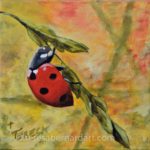
6″ w x 6″ h
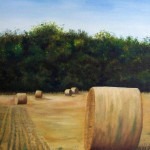
16″ w x 20″ h
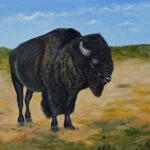
(2020)
24″ w x 18″ h
Art Glossary Quick Links
Contributing to The Art Dictionary
The art terms reference dictionary is a work in progress. New terms and definitions are added on a regular basis. If you know of an art term and definition that isn’t already listed in it but you believe it should be, send it to us and we’ll consider adding it. We’ll let you know if we do. Thanks!
Thanks for reading this!
